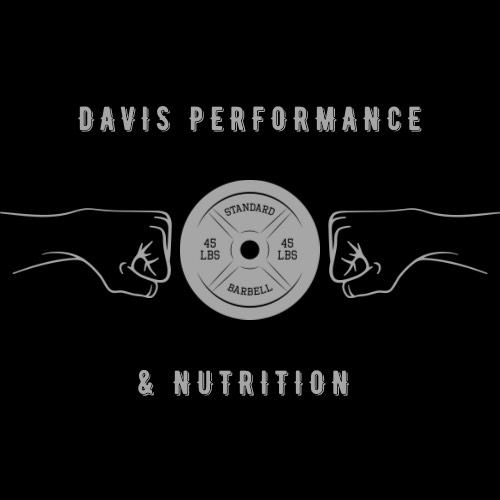Strength and Conditioning Blog of Blogs

Maximizing Muscle Mass: Unraveling the mystery of Sets and Reps
Maximizing Muscle Mass: Unraveling the Mystery of Sets and Reps
Introduction:
When it comes to building muscle mass, there's an abundance of information available. From workout routines to nutritional advice, it's easy to get overwhelmed. However, one aspect that often causes confusion is determining the ideal sets and reps to achieve optimal muscle growth. In this blog post, we'll delve into the science behind sets and reps, debunk some common myths, and provide you with practical guidance on how to structure your workouts for maximum muscle mass gains.

Understanding Sets and Reps:
Before diving into the specifics, let's define some key terms. A "set" refers to a group of consecutive repetitions of an exercise, while "reps" (short for repetitions) indicate the number of times an exercise is performed within a set. For instance, if you perform 10 push-ups, take a brief rest, and then repeat another 10 push-ups, that would constitute one set of 10 reps.
The Role of Progressive Overload:
To stimulate muscle growth effectively, you must embrace the principle of progressive overload. Progressive overload involves gradually increasing the demands placed on your muscles over time. By challenging your muscles with progressively heavier weights or greater resistance, you force them to adapt and grow stronger. Sets and reps are important components in achieving progressive overload.
Determining the Optimal Rep Range:
The rep range you choose for your workouts plays a significant role in determining the outcome of your training. While there isn't a one-size-fits-all answer, research suggests that a moderate rep range of 8-12 reps per set is most effective for muscle hypertrophy (muscle growth).
Higher reps (15-20+) are often associated with muscular endurance and can be incorporated as part of a well-rounded training program. Conversely, lower reps (1-5) with heavier weights primarily focus on building strength, rather than maximizing muscle size. However, it's important to note that these rep ranges aren't mutually exclusive, and you can combine them to target different muscle fibers and achieve a comprehensive workout.
The Set Equation:
Now that we've established the ideal rep range, let's discuss the number of sets needed for muscle growth. The total number of sets you should perform depends on several factors, including your training experience, workout frequency, and overall goals.
For beginners: Start with 2-3 sets per exercise. As a novice, your focus should be on learning proper form and technique while allowing your body to adapt gradually. Keep in mind that consistency and gradual progression are key to long-term success.
For intermediate to advanced trainers: Aim for 3-4 sets per exercise. As you gain experience, you'll need to increase the volume to continue challenging your muscles and eliciting growth. Incorporating multiple sets ensures that you're providing an adequate stimulus for muscle development.
Rest and Recovery:
In addition to sets and reps, rest and recovery play vital roles in muscle growth. During your workouts, allow for sufficient rest between sets to ensure optimal performance. Generally, a rest period of 1-2 minutes is recommended, but it may vary depending on the intensity of your workout.
Equally important is rest days. Muscles need time to repair and rebuild after intense training sessions. Aim for at least 48 hours of recovery time for each muscle group before targeting them again. Adequate sleep, proper nutrition, and hydration are also crucial for maximizing recovery and muscle growth.
Individual Variations and Adaptations: It's essential to recognize that everyone's body responds differently to training stimuli. Genetic factors, age, gender, and overall fitness level can influence how your body adapts and grows. Therefore, it's essential to listen to your body, track your progress, and make adjustments accordingly.
FAQ:
Q: What is the importance of sets and reps in maximizing muscle mass?
A: Sets and reps play a crucial role in determining the effectiveness of your workout routine in building muscle mass. The number of sets and reps you perform can influence muscle growth, strength gains, and overall training adaptations.
Q: How should I determine the number of sets and reps to perform in my workout?
A: The number of sets and reps you should perform in your workout will vary depending on your individual goals, fitness level, and training experience. It is important to consider factors such as your training intensity, volume, and frequency when determining the optimal number of sets and reps for your specific goals.
Q: What is the difference between high reps and low reps for muscle growth?
A: High reps (typically 8-12 reps) are generally used for muscle hypertrophy, which focuses on increasing muscle size. Low reps (typically 1-5 reps) are often used for strength training, which focuses on increasing muscle strength. Both high reps and low reps can contribute to muscle growth, but they target different aspects of muscle development.
Q: How often should I change up my sets and reps in my workout routine?
A: It is recommended to periodically change up your sets and reps in your workout routine to prevent plateaus and keep your muscles challenged. Incorporating different rep ranges, set schemes, and intensity techniques can help you continue to make progress and maximize muscle growth.
Q: Are there specific exercises that are more effective for maximizing muscle mass?
A: While sets and reps play a crucial role in maximizing muscle mass, the selection of exercises is also important. Compound movements such as squats, deadlifts, bench presses, and rows are effective for targeting multiple muscle groups and promoting overall muscle growth. Incorporating a variety of exercises that target different muscle groups can help you achieve balanced muscle development.



Facebook
LinkedIn
Instagram